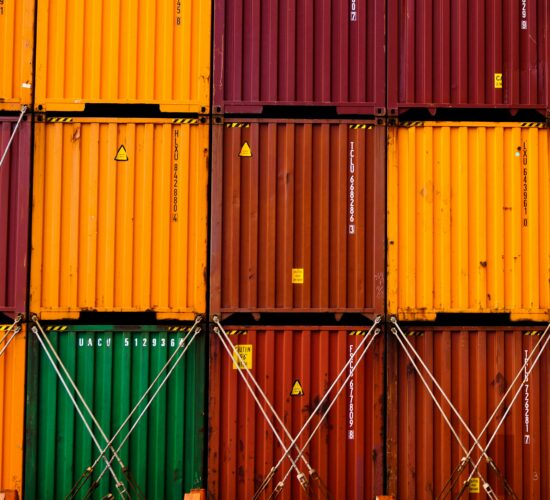How to Safeguard Your Supply Chain: A Guide to Secure Logistics

Supply chain security is an essential element of modern business operations. As industries become more interconnected, the need to secure logistics systems and ensure the smooth movement of goods is increasingly critical. In a world where supply chain vulnerabilities can result in severe financial and reputational damage, safeguarding logistics is no longer optional. It is an imperative. This guide explores actionable steps businesses can take to secure their supply chains and protect against disruptions.
Understanding the Importance of Supply Chain Security
A secure supply chain ensures that products move efficiently, on time, and without encountering significant obstacles. It builds trust with customers, partners, and stakeholders, positioning a business as reliable and resilient. The supply chain encompasses every step, from raw material procurement to delivering finished products to consumers. Any weak link in this chain can expose the entire system to risks, including theft, fraud, cyberattacks, and logistical disruptions.
A comprehensive security strategy involves more than just physical security measures. It requires technological solutions, strong partnerships, and operational strategy. By focusing on risk assessment, continuous monitoring, and technology adoption, businesses can significantly reduce the likelihood of disruptions and minimize potential threats to their operations.
Identifying Key Threats to Logistics and Supply Chains
Before securing their supply chains, businesses must identify the primary threats that could undermine their logistics systems. The most common risks include theft, fraud, cyberattacks, and natural disasters. These threats can cause delays, increase costs, and damage a company’s reputation.
Cybersecurity risks, in particular, have become more prominent in recent years. As businesses increasingly rely on digital tools to manage supply chains, cybercriminals target network and software vulnerabilities. Data breaches, ransomware attacks, and other forms of cybercrime can disrupt operations, leaving businesses vulnerable to significant financial loss.
Physical security remains a priority as well. Cargo theft and damage during transportation are constant concerns, especially in industries dealing with high-value goods. Protecting the physical movement of products requires robust tracking systems, secure packaging, and proper employee vetting to prevent insider threats.
Implementing Risk Management Practices
Risk management is a crucial component of any logistics security strategy. It involves identifying potential risks, assessing their likelihood and impact, and developing mitigation strategies. A thorough risk management plan should address every stage of the supply chain.
One of the first steps in risk management is to conduct a comprehensive supply chain audit. This audit should assess every link in the chain, from suppliers to distributors, to identify any weaknesses or vulnerabilities. Once potential risks are identified, businesses can develop contingency plans to address them. These plans could include alternative suppliers, backup transportation routes, and emergency security protocols.
Another vital component is regular training for employees and stakeholders involved in the supply chain. They must be aware of security risks and equipped with the knowledge and tools to handle them. Implementing a clear communication strategy across all teams ensures everyone is on the same page in times of crisis.
Leveraging Technology to Enhance Supply Chain Security
Technology plays a pivotal role in safeguarding supply chains. In recent years, innovations like Internet of Things (IoT) devices, artificial intelligence (AI), and blockchain have transformed logistics operations. These technologies provide real-time tracking, monitoring, and automated decision-making, significantly enhancing security.
IoT-enabled devices allow businesses to track goods in transit, ensuring that shipments are secure and that any tampering or deviations are immediately detected. This real-time visibility can reduce the theft risk and ensure that goods are delivered on time.
Blockchain, another powerful tool, provides an immutable ledger for transactions. By using blockchain to track the movement of goods, businesses can verify that products have not been tampered with or altered. This transparency enhances security and builds trust among partners and customers.
AI and machine learning tools are also increasingly used to predict supply chain disruptions. These technologies analyze vast amounts of data to detect patterns, warning businesses about potential disruptions like transportation delays or supply shortages. By accessing this predictive data, companies can proactively address issues before they become significant problems.
Strengthening Partnerships and Collaboration
Supply chain security does not rely solely on a business’s internal processes. It is also critical to foster strong relationships with suppliers, logistics providers, and other external partners. Working closely with these partners allows companies to align security practices and ensure everyone is committed to maintaining a secure logistics network.
It is essential to evaluate and vet third-party providers for their security practices. Businesses should ensure that their partners also take the necessary steps to secure their systems and operations. This can include ensuring that third-party logistics providers use encrypted systems, follow strict security protocols, and adhere to best practices in risk management.
Regular audits of external partners and clear contractual agreements outlining security expectations can help mitigate risks. By setting clear terms regarding security measures and responsibilities, businesses can ensure that their partners are held accountable for any lapses in security.
Continuous Monitoring and Improvement
Supply chain security is not a one-time effort but an ongoing process. As new threats emerge and logistics systems evolve, businesses must continuously monitor their supply chains to identify vulnerabilities and improve security measures.
This requires implementing a monitoring system that tracks shipments, supplier performance, and internal processes. Data collected from these systems should be analyzed regularly to detect anomalies or patterns indicating potential risks.
Investing in ongoing employee training and cybersecurity education is also necessary to keep the team updated on emerging threats. A vigilance and continuous improvement culture helps businesses stay one step ahead of potential security challenges.
Additional Information
- Blogs
- Ari Raptis